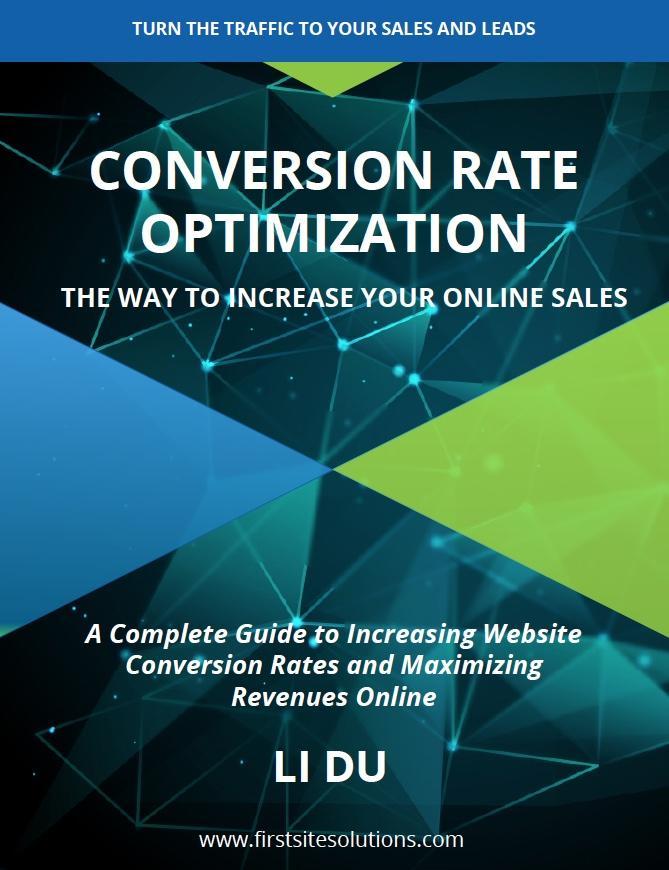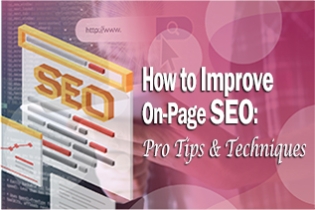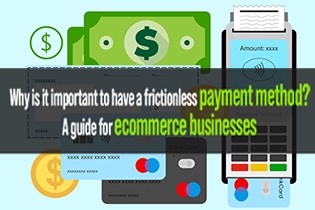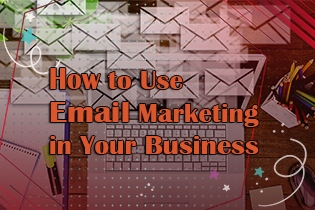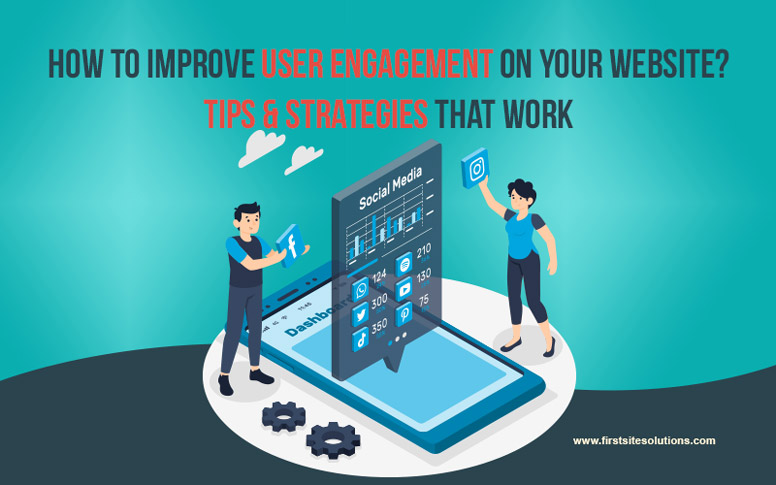
Marketers know that engaging users on their website is the first step towards a conversion. As long as they stay on their website, they can work on convincing visitors towards a purchase or a subscription. And that eventually leads to more sales and, of course more revenues.
But the scariest part is that if your target audience doesn’t find your content interesting, valuable, or relevant, they’ll leave without a second thought. According to the study, 38% of people will stop engaging with a website if the content or layout is unattractive. Even worse, 88% of online consumers are less likely to return to a site after a bad experience. Yikes!
This is a wake-up call!
It’s clear you need to make sure your engagement strategies are spot on. But there’s no need to hide from the truth. Admit it, you’re having trouble engaging with your customers.
However, you’re not alone. 57% of B2B marketers struggle with user engagement. (You can take a sigh of relief.) Somehow, knowing that there are others in the same boat makes this issue less intimidating.
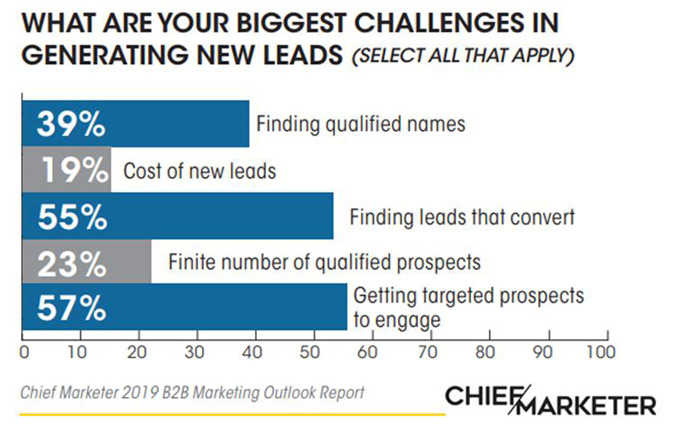
Why Is Engagement So Challenging?
Every brand has different goals and objectives, and engagement tactics will need to be slightly different in order to appeal to the target audience. However, for 63% of marketers, customer engagement means repeat purchases, renewals, and retention.
I personally agree with Search Engine Journal’s explanation:
“Engaging content is content that entices people to take some kind of action, however broadly defined. “
So only you know what your customers expect from your brand. Therefore, begin by gathering information about their preferences. Several ways you can do this are:
- Use the help of analytics
- Listen to social trends
- Take surveys and polls
- Ask for feedback from your customers
- Be aware of current trends
These activities need to be performed regularly to ensure that your efforts remain on track. After all, you don’t want to be wasting time and money on creating content that offers no value to your customers.
At the end of the day, it’s all about pleasing your target audience.
How To Improve User Engagement On Your Website
Flustered about just how you can go about achieving this? I’ve got your back. Here are several proven tips and strategies that will ensure you get the right results.
1. Improve page loading speed
Yes, customers are pampered silly, impatient as they are. A slow loading page will frustrate a visitor and kill user engagement even before they have a chance to lay eyes on a single page of your website. Don’t believe me?
According to Sprout Social, 40% of visitors abandon websites that don't load within three seconds. Ouch!
But a case study by Akamai Developers clearly correlated loading speed with bounce rate. When pages loaded in 2.4 seconds, they experienced a 12.8% bounce rate, while those that loaded in 3.3 seconds had a 20% bounce rate. A mere one second delay showed a 56% increase in bounce rate. That’s huge!

Surprisingly, this is a common issue. 73% of mobile users have encountered a website that was too slow to load. So the easiest way you can enhance user engagement is to reduce the loading time of your website.
Test the loading speed of your website with free tools such as Uptrends or Google PageSpeed Insights. Optimally, your site should load within two seconds. But if you’re having problems, consider the following:
- Visuals are great for enhancing user engagement, but they can significantly slow down a page. Consider limiting the number of images per post.
- Download plugins that delay image loading until the person scrolls down to a certain area of the page.
- Enable compression to decrease the size of CSS, HTML, and JavaScript files.
- Reduce redirects
2. Impress with flawless web design
Once a visitor lands on your page, you have 0.05 seconds to make a killer first impression.
But it’s not as difficult to master as you may think. According to Kinesis, first impressions are 94% design-related. And that means ensuring your website is appealing to look at and easy to navigate.
Here’s how you can do just that:
- Use simple, intuitive navigation. People need to access information within two or three clicks.
- Ensure the navigation bar accessible.
- Don’t use too many elements. A cluttered layout can diminish user engagement, leading to higher bounce rates.
- Organize structure so that important messages appear first or are bolder.
- The text should be readable.
- Break up text with adequate white spaces.
- Incorporate attractive visuals.
- Don’t use un-clickable buttons.
3. Make it mobile-friendly
It’s the era of smartphones. Practically all your users are on this platform. It’s no brainer that your website needs to be mobile-optimized.

74% of visitors will return to mobile-friendly websites. But that means creating a responsive design so that people can engage with your site effortlessly on mobile phones.
Ensure that you:
- Utilize thumb-friendly CTA buttons
- Use hamburger menus
- Flexible layouts that help the site adapt to any device a user has
- Apply appropriate information hierarchy
- Avoid crowding elements
- Place critical information above the fold
4. Facilitate communication
More than 40% of customers now expect live chat services on a website, while 50% expect to see it on sites used on their mobile devices. 79% of customers prefer live chat over other forms of communication. That’s because they can engage better with brands and get an immediate response, whether that’s additional information or an answer to a question. Moreover, chatbots offer 24/7 support, the perfect solution to their pampered existence.
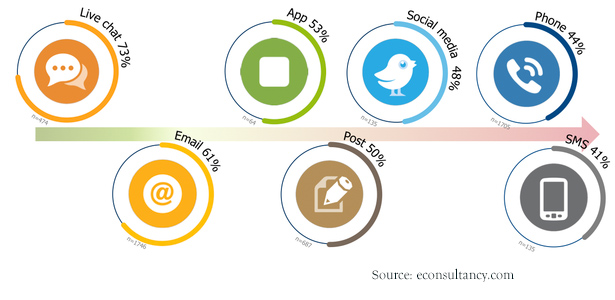
Bottom line is if you aren’t offering live chat options, you are ignoring your customers. Other websites are already incorporating this essential feature into their websites to connect with customers in real-time. According to an article from Business Insider, 80% of companies will be using chatbots by 2020.
It seems you need to add a chatbox to your homepage pronto. Simply use a live chat plugin or software.
5. Add a search box
Offering search capabilities on your website helps enhance user engagement. It allows users to find exactly what they are looking for. It’s common for websites to offer visitors to use filters to speed up their search.
However, the latest trend involves adding search boxes. Econsultancy states that the use of the search box results in an average conversion ratio of 2.4%, whereas one without a search box has an average of 1.7%.
Best practices concerning search boxes include:
- Use color and borders to help create a prominent search bar
- Place it at the top of the page
- Search should be easy to locate and use
- Offer intuitive search such as auto-suggestion
- Accompany search box with magnifying-glass icon
- Use the simplest version of the magnifying glass so that you use fewer graphic details
- Accept product codes and catalog numbers in the search box
6. Offer personalized content
You’ve worked long and hard to get visitors to your website in the first place. So wouldn’t it be great if your one-time visitor became a loyal follower, subscriber, or customer? Not only will you save money (acquiring a new customer is 5 - 25 times more expensive than retaining an existing one), but you’ll make more revenue (repeat customers spend up to 300% more).
That is the reason why websites often display relevant posts or products at the end of each page. Providing links for additional relevant content is an ideal way to keep visitors longer on your website. It not only enhances engagement but also closes the gap between a conversion.
But what could be better than offering recommendations that align with a visitor’s current preferences? According to the stats, personalized product recommendations can dramatically increase AOV (average order value), possibly increasing it by 369%. Moreover, it’s the ideal way to build long-term relationships as customers continue to browse, buy, and repeat interactions.

If you’d like to add this feature to your website, you can use a plugin and continue to provide more value to your users.
Go get ‘em!
Anyone can produce content. Your efforts need to focus on guiding all your potential customers towards a conversion. The important question is whether your strategy is effective. Are you getting the right results?
Keeping track of essential metrics such session durations, the amount of sessions, bounce rates, page depth, page views, return visits, and conversions can help gauge the effectiveness of engagement campaigns.
I hope that this blog has helped in aligning your strategies. Ready to bring your A-game to the table and generate the best user engagement levels?


